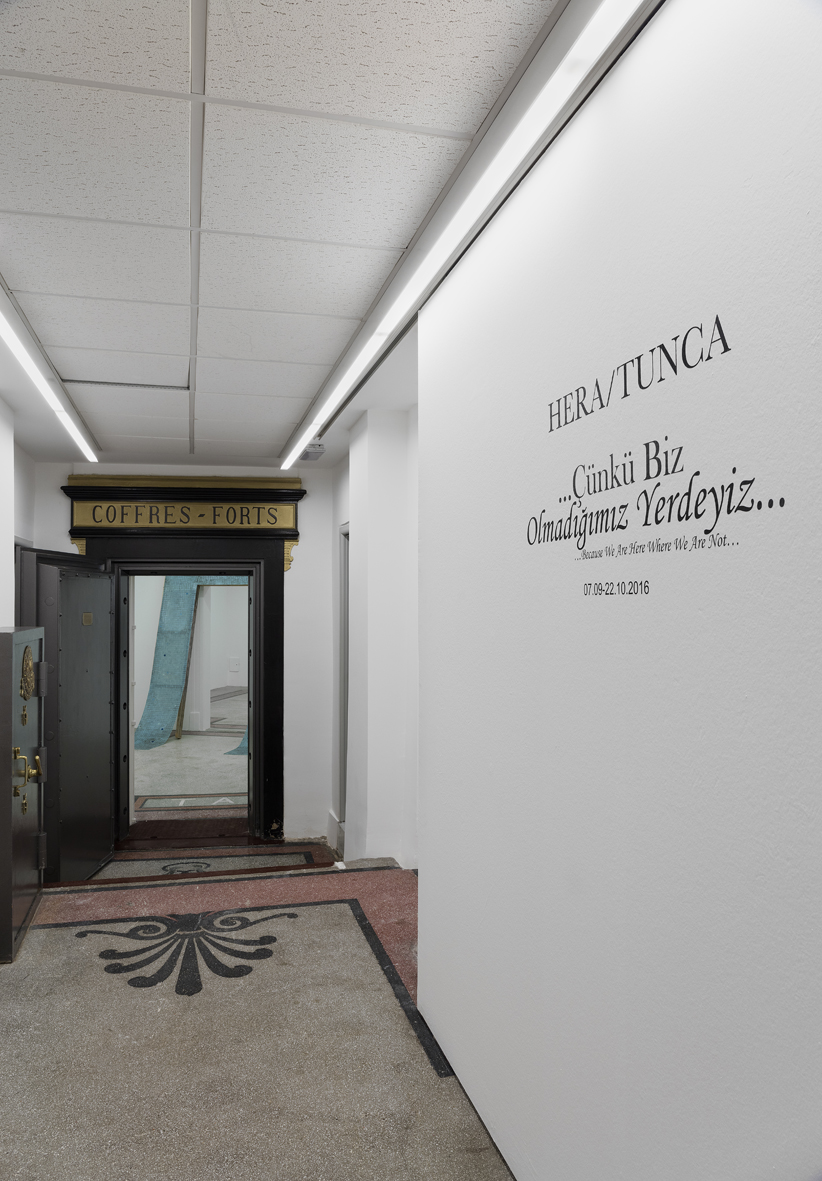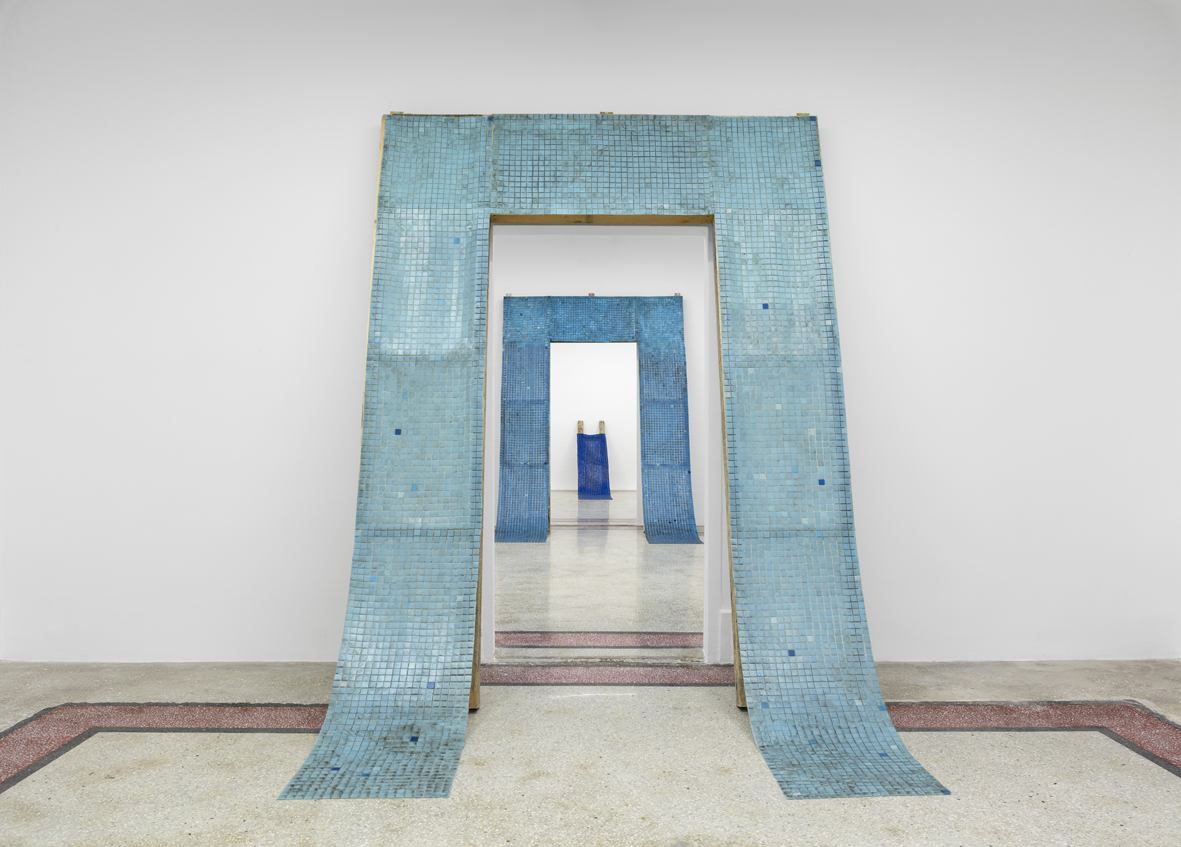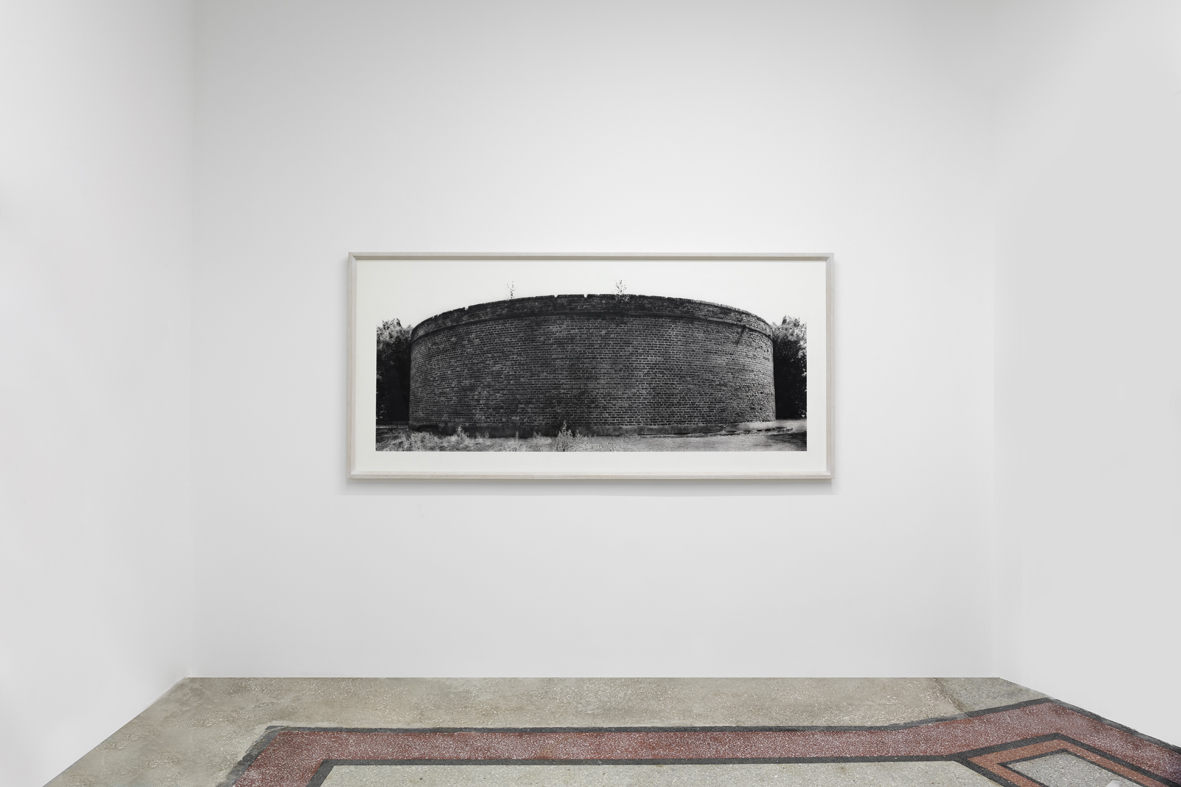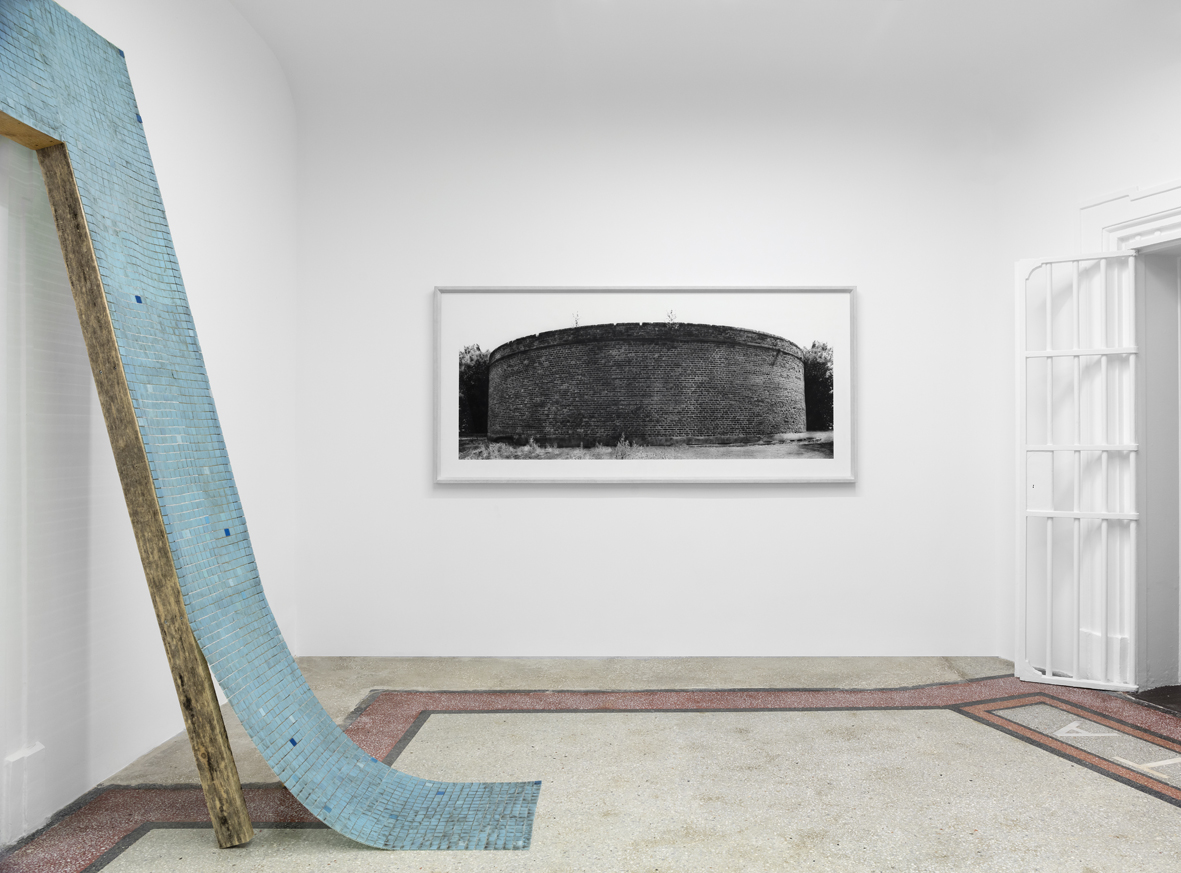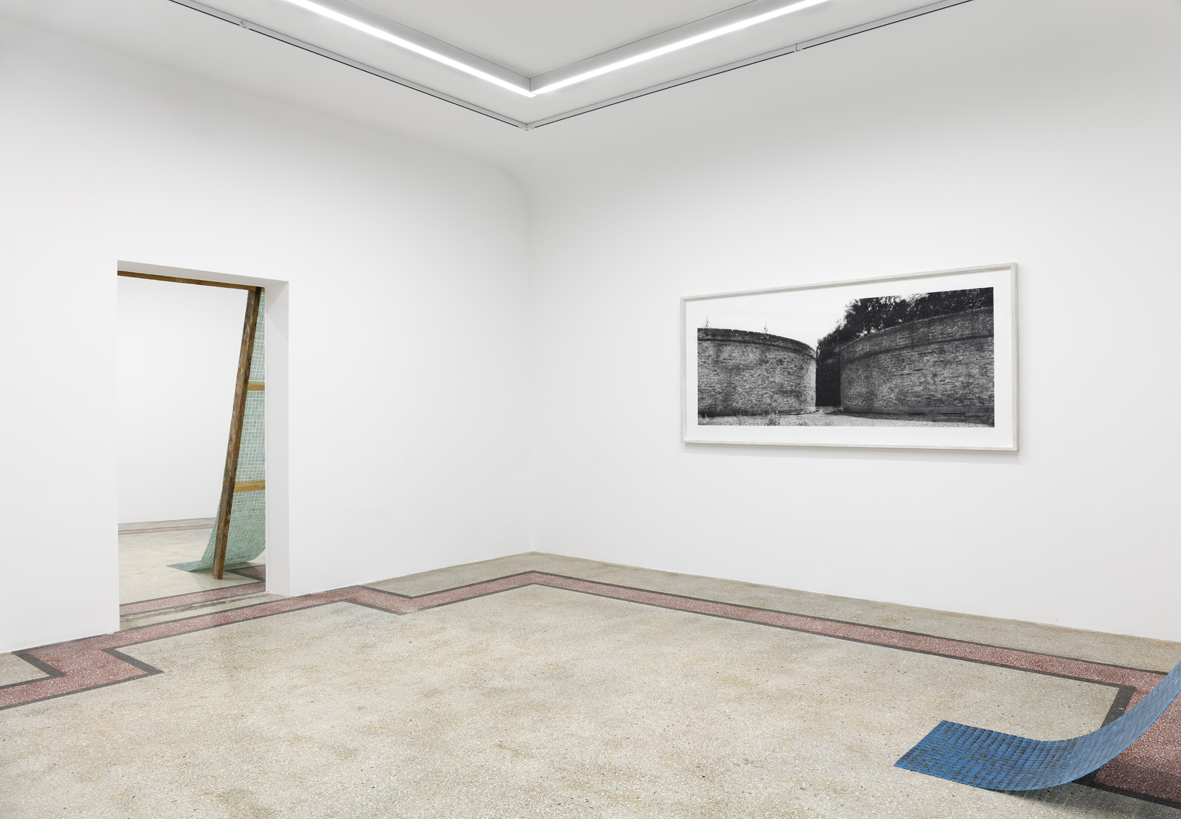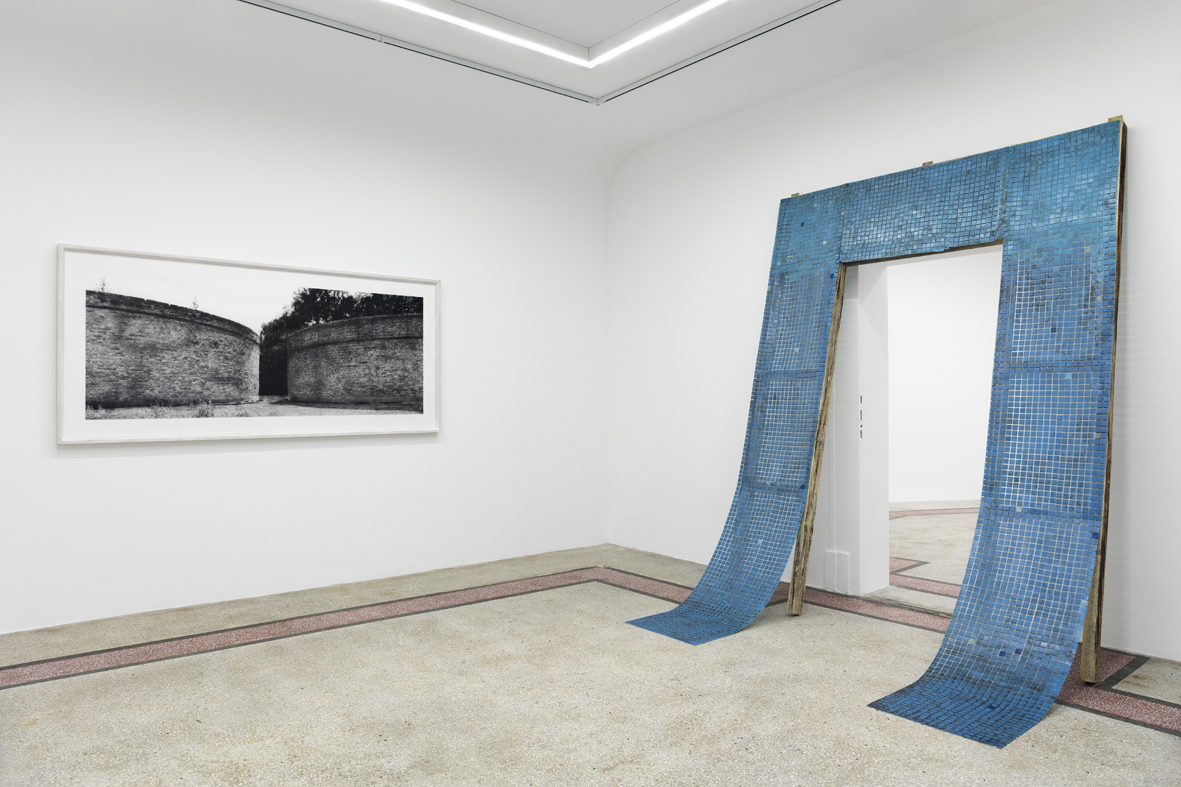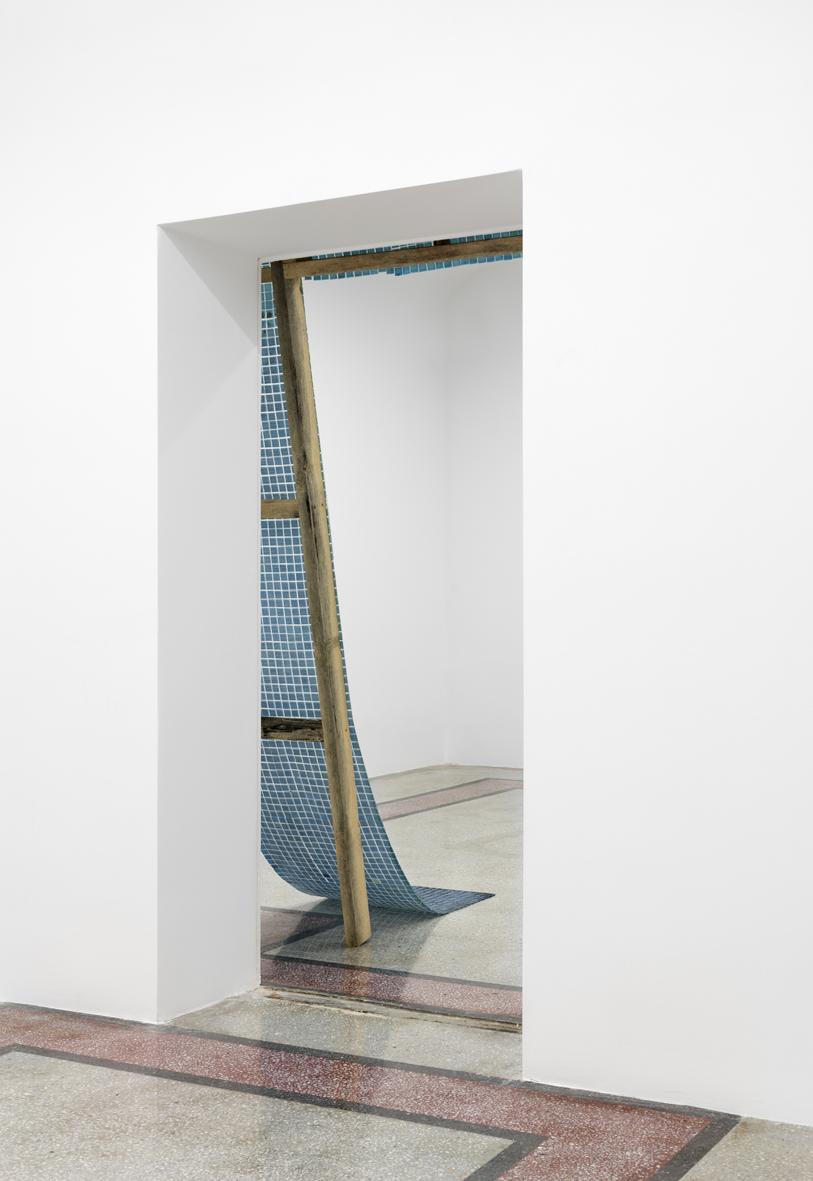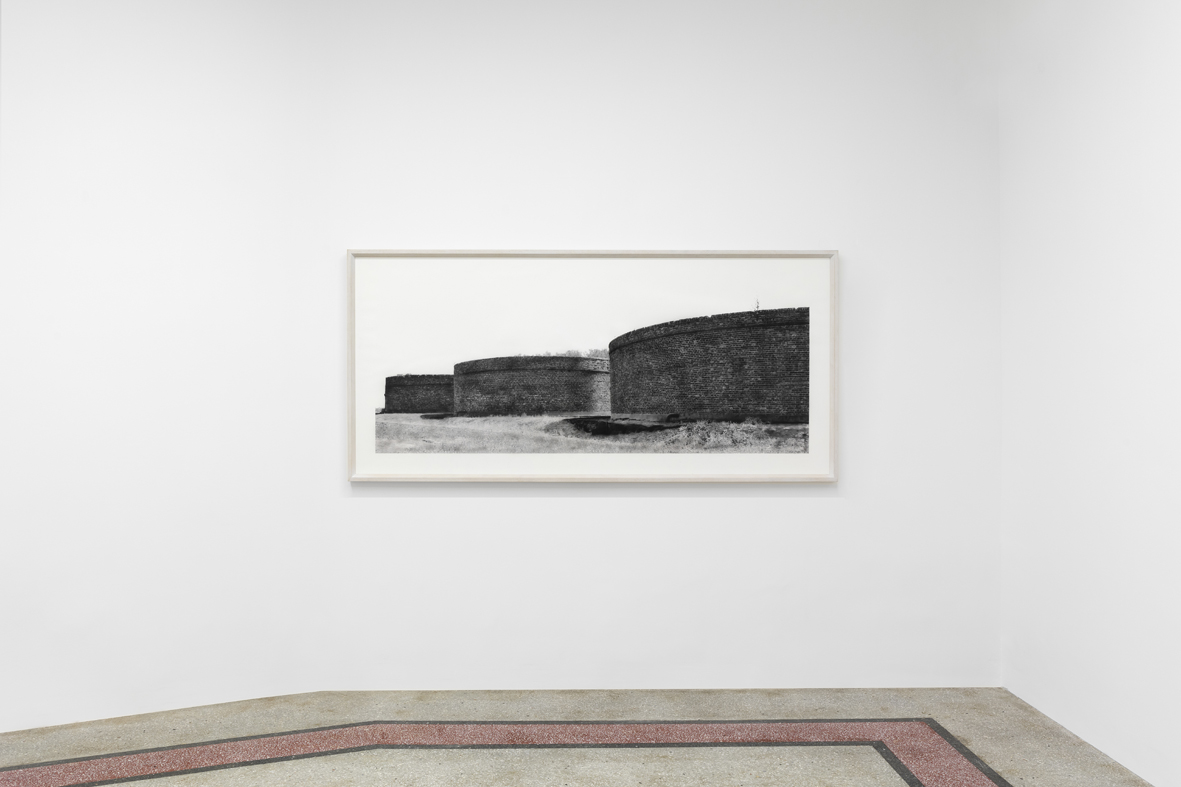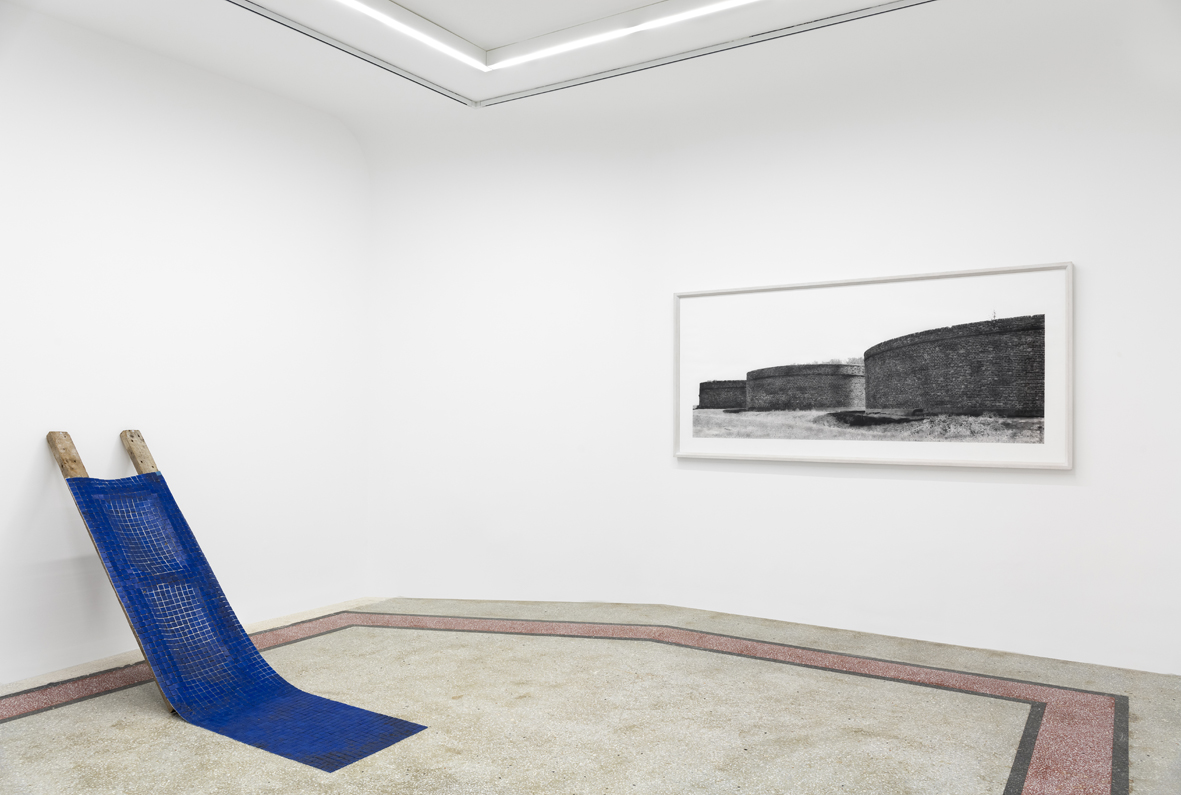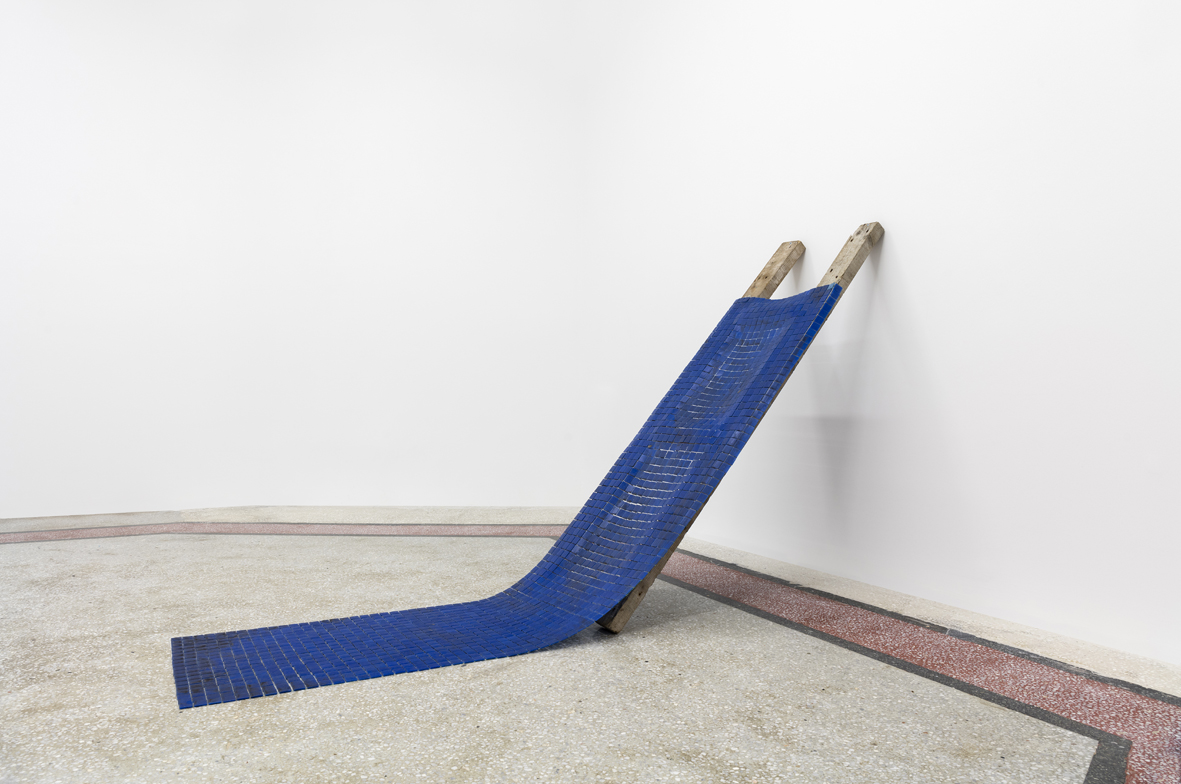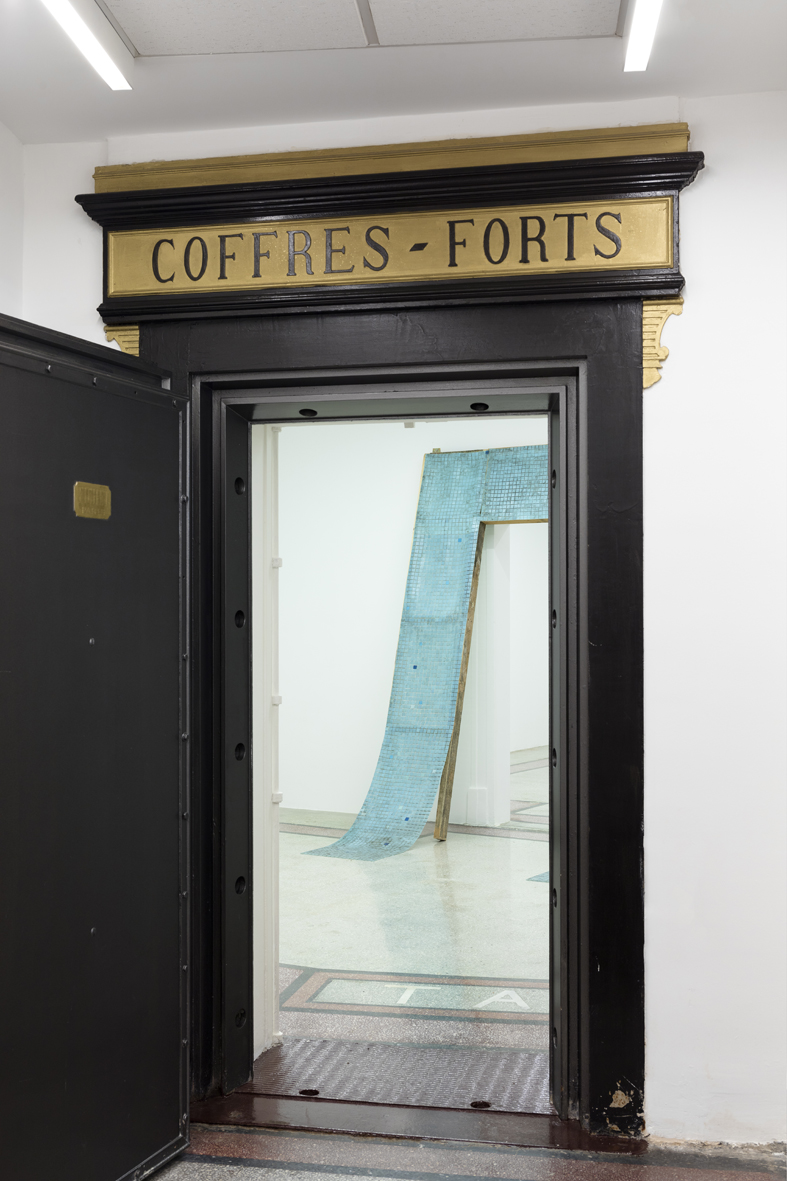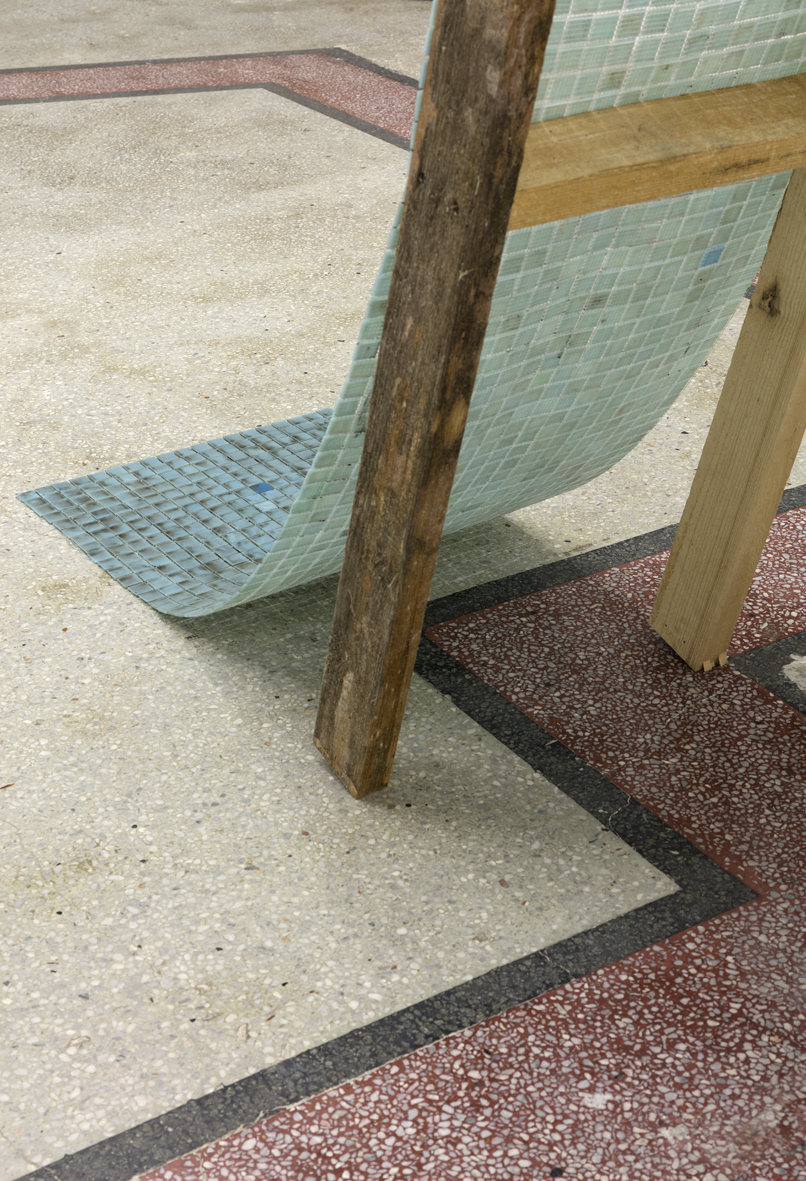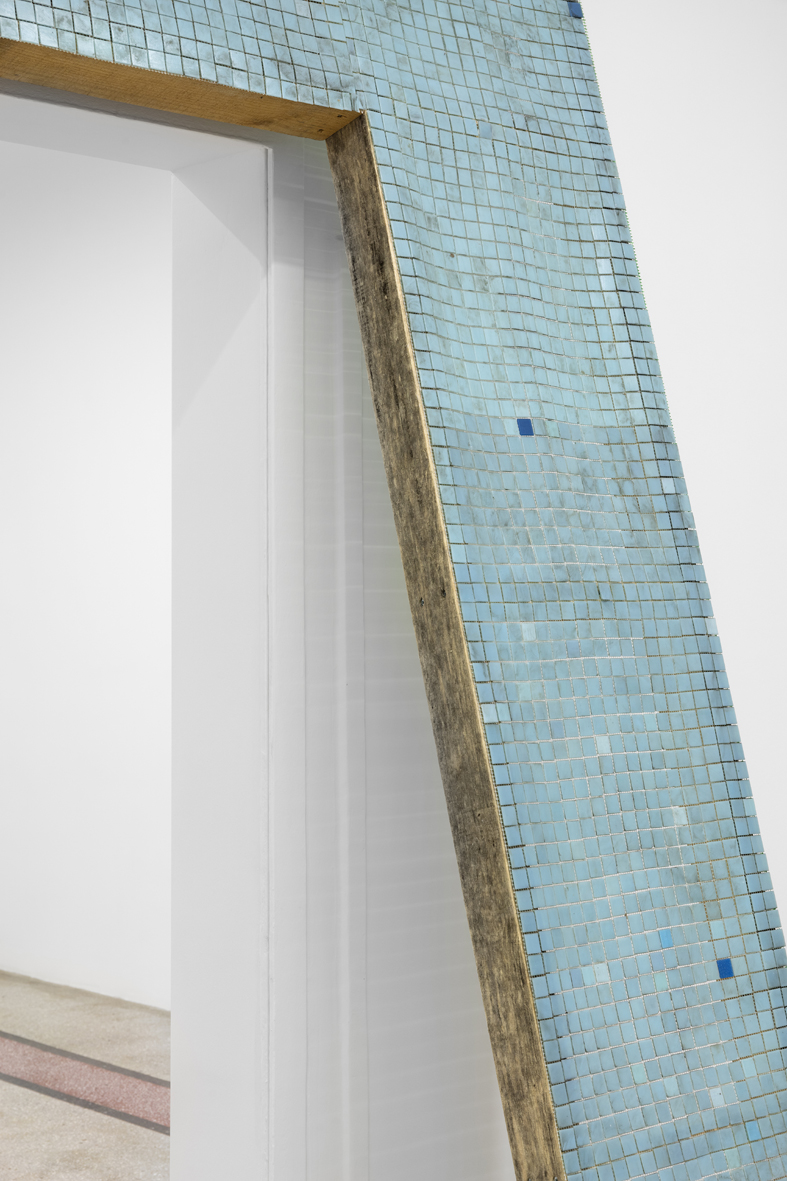Sabancı University
KASA GALLERY
7.9. – 22.10. 2016
HERA / TUNCA
…Because We Are Here
Where We Are Not…
This was how Hera Büyüktaşçıyan and TUNCA, two artists who investigate via alteration the phenomena of city and architecture as the shared equipment of socio-cultural memory and individual experiences, and develop thought on the expression of the links between these phenomena and objects, actions and images, began, for this exhibition, to play the game of getting lost, discovering borders, wandering in physical/mental spaces and exploring meaning in the city. They went on journeys along the ancient borders of Istanbul, along its city walls, bastions and gates. As an outcome of this relational urban experience, they created a parallax effect in the gallery space as a motivation that provided a contribution to their associative and sensorial productions and that reveals, not the visuality or nostalgia the city creates, but the plurality and commonality of individual relationships formed with the city, and operate with its aura.
Hera Büyüktaşçıyan in her site-specific installation titled “Crooked Gate I, II and Threshold”, via the construction of memory and its relationality with architectural space, focuses on the space she occupies Minerva Han as a historical, political and symbolic witness. Lifting the layers of the space from its external shell towards its interior, from the visible towards the symbolic and from its boundaries towards its identity, the artist carries out a poetic intervention on the building’s testimony. In reference to the blue-turquoise mosaic border tiles on the spherical façade of Minerva Han – a modernist building designed in the early 20th century by architect Vasilios Kouremenos, which changed hands in line with the country’s international political tendencies, and its founding function was to nurture the financial network – the artist uses the doors of Kasa Gallery in her installation. The door metaphor, described by Gaston Bachelard as “(…) an entire cosmos of the Half-open. (…) one of its primal images, the very origin of a daydream that accumulates desires and temptations: the temptation to open up the ultimate depths of being, and to conquer all reticent beings.” appears for the artist as a threshold in the dialectics of the interior and exterior. The artist, with an installation that takes its title from “Eğri Kapı/Crooked Gate”, the final gate in the Theodosian walls, the city walls built during the reign of Emperor Theodosius II, takes Minerva Han and Kasa Gallery, as a metaphor to render architecture, history and identity fluid and ambiguous. The mosaic “gates” the artist re-constructs in an apparently melting form, beyond their intellectual and physical meaning, overlay, in the context of urban memory, the relationships between Eğri Kapı and Minerva Han, both situated on inclined land. The melting doors point towards the memory of space that has been rendered fluid by socio-political changes, and overturned by transformations brought on by political power, and to a turbulent social structure.
If the door, as both a threshold and a boundary, is a spatial dimension threshold between the one inside and the one outside, then the walls without doors we find in TUNCA’s drawings titled “Rotunda I, II, III” take their place in the space as images that possess a double symbolic quality, as an “inside-outside” as mentioned in Henri Michaux’s poem. The triptych drawing the artist has produced on the basis of the image of water reservoirs of the camp in the Brzezinka (Birkenau) area, three kilometres west of Auschwitz, provide visual clues as to how the relational urban experience of aimless wandering can render space and memory fluid and ambiguous. In the relationship of collective memory and spatial elements, in the relationship of architecture, which at times serves as a mechanism in the visual expression of political and soci0-economic might, and power, and in the relationship of power’s ambition to produce fixed and invariable phenomena and history, the artist treats space as the conveyor of memory. With the spherical architectural form of the structure, and their reference to the antique world and sacred sites with the triplicate model common in the tradition of painting, Rotundas evoke, in contrast with Parmenides’s contention that existence possesses an aggregate/spherical saturation, an image of ontological emptiness. The Rotunda, today when everything is no longer eternally and infinitely invariable and is in seamless becoming and flux, indicates that history itself may function as a memory site.
Merleau-Ponty states that, in the journey of the “mind-body-world”, looking at the city from different viewpoints helps the individual to rethink her relationship with the city. Thus, HERA and TUNCA, too, take us to a fictional “place” with its melting doors, and walls with no entry point. The exhibition titled “Because We Are Here Where We Are Not”, takes its name from a poem by Pierre-Jean Jouve, and via the relationship of the city and architecture with “place”, invites the viewer to look at the invisible beyond physical and intellectual spaces, and beyond borders and thresholds, and to the journey of bodily experience transforming into artistic form.
DERYA YÜCEL
April-August 2016, Istanbul
